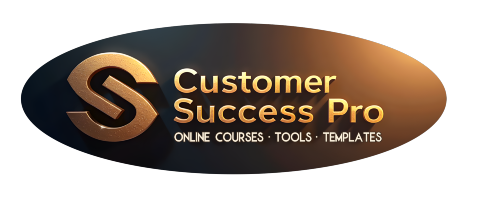


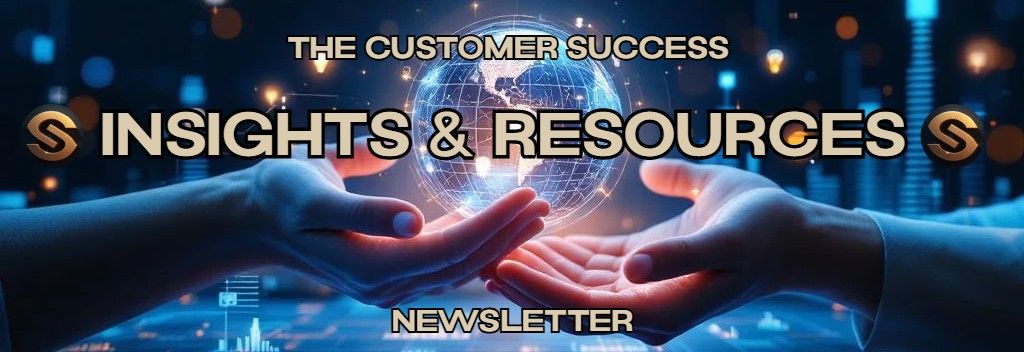


November 12, 2025
In Customer Success, we pride ourselves on being responsive. We answer quickly. We jump on calls. We follow up before the client even asks.
But here’s the truth no one talks about: Being “on” all the time comes at a cost. 👇
It’s not just about burnout. It’s about identity.
When your value is tied to how fast you reply, how calm you stay, how much you absorb— you start to believe that your worth is measured by your availability.
And that’s dangerous.
Because the more we blur the line between being helpful and being self-sacrificing, the more we lose sight of what sustainable success actually looks like.
🧠 What I’ve Learned
Responsiveness does not equal effectiveness.
A fast reply isn’t always the right reply. Sometimes, the best support comes after reflection, not reaction.
Boundaries build trust.
When we model healthy limits, we give clients permission to do the same. That’s not friction—it’s leadership.
Presence beats performance.
Clients don’t remember how fast you replied. They remember how seen they felt when you did.
🛠️ What I Practice Now
I don’t reward “always available.” I reward thoughtful, human-centered action.
I encourage my team to pause before replying—especially when emotions are high.
I remind myself (and others) that rest is part of the job, not a reward for finishing it.
💬 One Phrase That Changed Everything
“You don’t have to be available to be valuable.”
That’s the mindset shift I’m building into every CS conversation, every onboarding, every renewal.
Because the best CS teams aren’t just fast. They’re grounded. They’re intentional. They’re sustainable.
If this resonates with you—or if you’ve ever felt the pressure to always be “on”—I’d love to hear how you’re navigating it.
Let’s keep building a CS culture that values people, not just performance.


November 5, 2025
The world of Customer Success is evolving fast, and here is where I think it’s headed. 👇
First, outcome-based metrics will become the gold standard. We’re moving beyond activity counts to real impact—renewals, expansions, and customer health.
Second, AI and automation will empower CS teams to be more proactive and personalized. Imagine predictive insights that tell you when a customer is at risk before they even know it.
Third, the customer journey will be hyper-personalized. One-size-fits-all is dead. Tailored experiences will drive loyalty and growth.
Fourth, cross-functional collaboration will be non-negotiable. CS will work hand-in-hand with Product, Sales, and Marketing to create seamless customer experiences.
Finally, product-led growth will integrate tightly with CS. The product itself will be a key driver of success, with CS guiding customers to unlock its full value.
The future is bright for Customer Success professionals who embrace these shifts and lead with strategic vision.


October 29, 2025
Customer Success isn’t about how many calls you made or how many QBRs you ran. It’s about what changed for the customer. Did they renew? Did they expand? Did they actually succeed? 👇
Activity metrics are easy to track—but they’re lazy. They reward motion, not progress. And in my view, that’s a dangerous game.
Here’s the way I see it:
✅ A CS manager who sends 50 emails a week might look busy. But if none of those emails drive adoption, retention, or growth… what are we really measuring?
✅ Customers don’t care how hard you work. They care whether your work helps them win. That’s the scoreboard that matters.
✅ Outcome metrics build trust across departments. When CS is measured on retention, expansion, and product impact, it aligns with Sales, Product, and Finance. That’s how you stop being a support function—and start being a strategic driver.
✅ Activity metrics burn people out. They push quantity over quality. And that’s not sustainable.
So here’s my take:
If you want a CS team that’s respected, empowered, and strategic—measure them like they matter. Track the outcomes. Celebrate the wins. And stop counting steps when you should be measuring strides.
If we say Customer Success should be measured on outcomes, not activity, then we need to define what those outcomes are. For me, it comes down to three buckets:
Customer Impact: Did we help the customer succeed? That means tracking adoption, retention, expansion, and advocacy. Not just usage—but meaningful progress toward their goals.
Strategic Alignment: Are we driving value across the business? CS should be measured on metrics that matter to Sales, Product, and Finance—like Net Revenue Retention, renewal forecast accuracy, and actionable product feedback.
Team Sustainability: Are we building a CS org that lasts? That means looking at burnout indicators, quality vs. quantity ratios, and how much time is spent on proactive vs. reactive work.
Activity metrics have their place—but they’re not the scoreboard. Outcomes are. That’s how you build trust, drive strategy, and prove CS is a growth engine—not just a support function.


October 22, 2025
Solo CSMs wear every hat—onboarding, renewals, support, strategy. It’s high-impact work with limited bandwidth. That’s where AI comes in.
I use AI to extend their reach without adding pressure. Here’s what I like to set up for them: 👇
1. Call Summaries That Actually Help
After a client call, AI generates a clean, actionable summary. Not just “what was said”—but what matters.
Example: “Client flagged a blocker with integration. Wants resolution by Friday. Mentioned interest in new analytics feature.”
That’s gold for follow-ups and internal alignment.
2. Sentiment Tagging in CRM
AI scans notes and emails for tone shifts. If a client moves from “engaged” to “cautious,” we flag it early.
It’s like having a sixth sense for churn risk—without the guesswork.
3. Personalized Email Drafts
Need to send a renewal nudge or onboarding recap? AI drafts it in the client’s tone, referencing their goals and usage.
Solo CSMs tweak and send—no more staring at a blank screen.
4. Content Surfacing for Enablement
When a client asks, “Do you have a guide for X?” AI pulls the most relevant resource from the knowledge base.
It’s instant enablement, without the scavenger hunt.
5. Strategic Planning Support
AI helps solo CSMs build QBR decks, prep for renewal calls, and even suggest upsell opportunities based on usage trends.
It’s not replacing strategy—it’s accelerating it.
By implementing the above, you're supporting solo CSMs. It isn’t about doing more. It’s about doing it smarter. And AI gives them the leverage they need to stay proactive, personal, and powerful.


October 15, 2025
Customer Success is a people-first role. We’re not just managing accounts—we’re managing emotions, expectations, and experiences. And that means mental health isn’t a side topic. It’s central. 👇
Here’s the truth: CS professionals are often the emotional shock absorbers of the business. We catch the frustration when a feature breaks. We absorb the tension when timelines slip. We navigate the silence when a client goes dark. And we do it while trying to stay upbeat, responsive, and “on.”
It’s rewarding work—but it’s also draining.
I’ve seen it firsthand. The burnout. The anxiety. The quiet pressure to always be available, always be helpful, always be the calm in the storm. And I’ve felt it too.
That’s why I believe mental health needs to be part of the CS conversation.
Not just in HR policies—but in how we lead, how we coach, and how we build our teams.
Here’s how I structure it for teams I build:
- I normalize breaks. If someone needs a breather after a tough call, they take it. No guilt.
- I encourage boundaries. Just because a client emails at 10 PM doesn’t mean we reply at 10:01.
- I check in—not just on performance, but on people. “How are you doing?” isn’t small talk. It’s leadership.
And when I see a teammate struggling, I don’t wait for them to ask for help. I show up. I listen. I make space.
Because the best CS teams aren’t just high-performing. They’re human-centered.
Mental health isn’t a weakness. It’s a signal. And when we honor it, we build stronger teams, deeper relationships, and more sustainable success.
Let’s keep talking about it.


October 8, 2025
A few months ago, I had a customer who went quiet. Usage dropped. Emails slowed. The signs were there—classic churn risk.
Instead of pushing harder, I paused and asked: “What’s changed on your end?” 👇
Turns out, they’d onboarded a new team lead who didn’t know the value we’d already delivered. So I rebuilt the story. I pulled usage data, highlighted wins, and framed it around their current goals—not ours.
Then I offered a quick win: a 15-minute walkthrough tailored to their new workflow. No fluff. Just relevance.
That was the turning point.
They re-engaged. They expanded. They became one of our most active users.
The lesson? Churn risk isn’t always dissatisfaction. Sometimes it’s disconnection. And when you reconnect with empathy and clarity, you don’t just save the account—you unlock its potential.


October 1, 2025
Customer Success isn’t just a department—it’s the pulse of the customer. And if we’re serious about retention, growth, and long-term value, CS leaders need a seat at the executive table. 👇
Here’s why:
Customer success sees the full journey. We’re there from onboarding to renewal, from first login to final feedback. We know what’s working, what’s breaking, and what’s quietly eroding trust.
We hear the unfiltered truth. Not just survey scores or NPS—but the real stories behind the numbers. We know when a feature frustrates, when a workflow confuses, and when a promise falls short.
We connect dots others miss. Customer success leaders see the ripple effects—how product decisions impact adoption, how support gaps affect sentiment, how pricing shifts influence retention.
And most importantly, we advocate for the customer. Not just in theory, but in every meeting, every roadmap review, every strategic pivot.
When CS is part of the exec team, the customer has a voice in the room. Decisions get sharper. Strategies get stickier. And growth becomes sustainable.
It’s not about ego—it’s about impact. Customer success leaders belong in the room where it happens.


September 24, 2025
Let’s talk about playbooks.
In Customer Success, they’re everywhere. They promise consistency, scale, and a roadmap for every scenario. And sure, they’re helpful—especially when you’re onboarding new team members or trying to align a growing org.👇
But here’s the thing: no two customers are the same.
I’ve seen playbooks that treat every renewal the same way. Every onboarding the same way. Every escalation the same way. And while that might work on paper, it rarely works in practice.
Because behind every account is a human. And humans don’t fit into templates.
I’ve had customers who needed hand-holding through every step—and others who wanted to run fast and barely check in. I’ve had execs who cared about ROI and others who just wanted peace of mind. I’ve had moments where the playbook said “send the QBR deck,” but my gut said “pick up the phone.”
The best CSMs I know don’t just follow the playbook. They read the room. They adapt. They ask questions. They listen.
Playbooks should be a starting point—not a script.
Customer Success is about building trust, not checking boxes. It’s about knowing when to pivot, when to personalize, and when to throw the playbook out entirely.
So yes, I use playbooks. But I use them with a healthy dose of human judgment.
Because the real magic happens when we meet customers where they are—not where the playbook says they should be.


September 17, 2025
I still remember the moment it happened—my inbox pinged with a short, handwritten note scanned and attached to an email. The client, a mid‑size SaaS firm we’d been onboarding for three months, wrote:👇
“You didn’t just get us up and running; you made us feel confident that we could actually achieve the outcomes we promised our own customers.”
That line stopped me in my tracks. It wasn’t a thank‑you for a ticket closed or a feature demo delivered. It was a compliment that spoke to something far deeper than any KPI: trust.
When I unpack that sentiment, three things become crystal clear:
💥 People crave certainty:
In the whirlwind of product launches, integrations, and rapid growth, the biggest gift we can give a client is the belief that they’re on solid ground. Our health scores, usage dashboards, and onboarding timelines are all tools, but the feeling of confidence is the true outcome.
💥 Personal touch matters:
The note wasn’t typed; it was a scan of a pen‑written card. It reminded me that behind every data point is a human who appreciates a genuine, personal gesture—a quick video walkthrough, a surprise “welcome” Slack emoji, or a coffee‑chat invite that isn’t tied to a sales target.
💥 Success is contagious :
After that compliment, the client’s team started sharing internal success stories faster, championing our product in their own board meetings. Their confidence turned into advocacy, which in turn fed back into higher renewal rates and organic referrals.
Since that day, I’ve built a small habit into every onboarding cycle:
Ask the client early on what confidence looks like for them, then map every milestone to that vision.
If you’re wondering how to capture that same magic, try these quick steps:
👉 Start with a story:
At the kickoff, ask the client to describe a future scenario where they’re proud of the results.
👉 Translate to metrics:
Convert that narrative into measurable checkpoints (e.g., “first 10 k in revenue generated via the platform”).
👉 Celebrate early wins:
Publicly recognize when those checkpoints are hit—team shout‑outs, short video clips, or a simple “well done” badge.
The next time you hear a client say, “You’ve given us confidence,” pause. Let that be the compass for every interaction that follows. It’s a reminder that while we’re building software, we’re really building trust.


September 10, 2025
There’s a moment in every client relationship when things shift—from cautious exploration to genuine trust. I’ve come to recognize these milestones not just as nice-to-haves, but as the foundation of long-term success. 👇
One client stands out in my mind. They’d been quietly testing the waters, unsure if our platform could really help. Then one day, they tried a feature they’d been avoiding. It wasn’t flashy. It didn’t require a big rollout. But it solved a problem they’d been stuck on for weeks.
Their message to me was simple:
💥 "This changes everything." 💥
And it did. From that point forward, their engagement deepened. They asked smarter questions. They gave feedback that helped us improve. They even started referring others. That moment—when they saw real value for themselves—was the turning point.
I’ve learned to pay close attention to these quiet breakthroughs. They’re not always easy to spot, but they’re powerful. They mark the shift from transactional to transformational.
What made this moment so meaningful wasn’t just the feature; it was the emotional shift. I could hear it in their tone, see it in their behaviour, and feel it in the way they started showing up. They weren’t just using the product anymore; they were investing in it.
That kind of trust doesn’t come from a slick demo or a well-written help article. It comes from solving a real problem at the right time. And when it happens, it opens the door to deeper collaboration, stronger retention, and genuine advocacy.
I’ve started tracking these moments more intentionally. I jot them down, reflect on what triggered them, and look for patterns. Because if I can understand what creates that shift, I can help more clients get there faster.
📌 So here’s my challenge to you:
Think about your own client relationships. What was the moment that changed everything? And how can you create more of those?


September 3, 2025
A few years ago, I found myself in a tough customer meeting. The client was frustrated—understandably so. There had been delays, miscommunication, and a growing sense of distrust. Normally, I would’ve gone in armed with explanations and solutions. But that day, I decided to try something different. I listened. 👇
Not just to the words, but to the emotion behind them. I didn’t interrupt. I didn’t defend. I simply gave space for the customer to be heard. And when they finished, I responded with honesty: “You’re right. We didn’t deliver the way we should have. Let’s make it right.”
That moment shifted everything. The tension eased. The conversation became collaborative. And most importantly, the relationship began to rebuild.
Since then, listening has become my default—not my backup plan. It’s changed the way I approach every customer interaction. I’ve learned that people don’t just want solutions—they want to feel understood. And when they do, trust follows.
Customer Success isn’t just about fixing problems. It’s about being present, being human, and being willing to grow.


August 27, 2025
We’ve all been there—excitedly walking a client through a new solution, only to feel that subtle resistance: the pause on the other end of the call, the “but we’ve always done it this way,” or the outright, “this won’t work for us.” Handling pushback isn’t just part of the job in Customer Success—it’s a chance to build real partnerships. 👇
One of the most powerful lessons I’ve learned is that objections usually aren’t about us or even the solution. They’re about feeling heard, about trust, and about fear of the unknown. My favorite tactic for defusing tough client pushback is something simple, but so easy to overlook: I listen deeply and without an agenda.
When a client voices concerns, I hit pause on my pitch. Instead, I lean in and say, “Tell me more about what’s on your mind.” Let them talk. If it gets awkward, that’s okay—just hold the space. Sometimes, clients just need to vent. Sometimes there’s a real, actionable concern underneath the surface. The key is to avoid jumping to quick fixes. Instead, I reflect back what I’m hearing, validate their experience, and thank them for their honesty.
Only when the client feels truly heard do I gently transition to troubleshooting and brainstorming. I’ll ask—“If we could find a way to address that concern together, would that help?” Nine times out of ten, this moment of empathy is what turns an objection into an opportunity.
The end goal isn’t just winning an argument or checking off a box for adoption—it’s showing clients that we’re partners, not vendors. When clients know you care about their hurdles as much as your own success, magic happens.
So next time you hear that pushback? Remember, there’s a person behind that objection. Listen deeply. Validate gently. And watch as walls start to come down.


August 20, 2025
Losing a customer always stings, but losing a long-term customer who’s become a favorite hits differently. 👇
I’ll never forget the day I received that message: “We’ve decided to move in a new direction.” This wasn’t just any account. Over the years, we’d shared calls celebrating milestones, swapped jokes in emails, talked about common hobbies, and built real trust.
Honestly, it floored me. I replayed every conversation in my head, wondering what I could have done differently. The truth? They felt their needs had shifted, and I hadn’t seen it coming. It would have been easy to get bitter or blame circumstances, but instead, I leaned in and asked for honest feedback.
What I learned changed my whole approach. I realized that genuine relationships mean staying curious, even when things seem perfect. I built a new system for checking in regularly and making space for tough conversations, not just easy ones. I've learned to focus on listening deeply, not just being there when things go well.
Losing that favorite customer was hard, but their honesty ended up being a gift. It helped me grow, and in turn, made me a better partner to every other customer on my list.


August 13, 2025
How you start your day truly sets the tone for everything that follows, especially in Customer Success, where each interaction and decision can create big wins for both your customers and your company. 👇
Over time, I’ve discovered that a mindful morning ritual isn’t just a “nice to have”—it’s a must for staying focused, positive, and on top of customer needs.
Here’s my favorite way to kick off my mornings for maximum momentum:
Before touching my inbox or joining any meetings, I take five intentional minutes to reflect and jot down my top 3 priorities for the day. I don’t stop at writing the “what”—I include a quick note on “why” each goal matters. This framing gives my work meaning, helping me show up with intention in every call, email, and project.
Then, with a fresh cup of coffee in hand, I carve out 15 minutes to send quick customer updates. Whether it’s sharing a win, checking in on an open ticket, or just saying thanks, these early touchpoints build relationships and let customers know they’re top of mind.
Lastly, I give myself ten minutes for personal development—maybe reading a great post, catching a short podcast, or just breathing to set a clear, calm mindset. It’s a small investment that pays off all day.
Try your own version of this routine and watch how your energy, focus, and connections with customers soar. The best days always start with purpose!


August 6, 2025
A common trap in Customer Success is “single-threading”—pouring all your attention into one enthusiastic champion. While having a main contact is convenient, it creates risk and limits potential. The real differentiator for leading Customer Success Managers isn’t support tickets or even champion relationships—it’s proactively building trust with everyone who shapes the customer’s journey: executives, power users, and (yes) even skeptics. 👇
Example 1: Executive Alignment Saved a Renewal
I once managed an account where our day-to-day champion was all-in—but, months before renewal, we heard rumblings that a new C-suite leader was questioning our value. Instead of waiting for trouble, I requested a brief “strategy call” with the exec to understand their evolving goals. By showcasing tailored ROI data and mapping our product to their vision, I turned a skeptic into a supporter. The champion appreciated the backup, and the renewal became a no-brainer.
Example 2: Power Users Drive Adoption
Onboarding with a global client, I noticed that two power users adopted features that most others ignored. I reached out directly, set up a mini “user spotlight” in our next QBR, and helped these experts train their peers. Their excitement proved contagious, and within weeks, broader adoption led to new expansion opportunities, all because power users felt heard and empowered.
Example 3: Turning a Detractor into an Advocate
Not every voice is a fan at first. At another account, a frontline manager regularly raised concerns about our solution’s complexity. Instead of avoiding the feedback, I invited them to a focused feedback session. We brainstormed together, adjusted a workflow, and followed up to show the impact of their input. Not only did the operational lead become one of our most vocal advocates, but they also fought for continued budget during contract renewal.
The Takeaway:
True CSMs know that renewals and expansions aren’t won at the last minute or with one happy contact—they’re earned by weaving a web of trust across the organization. Start proactively reaching out to execs, listen to power users, and engage detractors early. Diversity of relationships is your strongest insurance policy for lasting customer value.


July 30, 2025
If you’ve spent any time in Customer Success, you know that “customer health” isn’t just a buzzword—it’s the early warning (and celebration) system that helps us move from reactive firefighting to high-impact partnerships. Over the years, I’ve learned that building—and actually using—a thoughtful health score is one of the most valuable practices for both customers and teams.👇
After testing various approaches, here’s what I’ve found works best for tracking and improving customer health metrics:
1. Make Your Health Score Multidimensional
One number rarely tells the whole story. I combine leading and lagging indicators into a simple dashboard:
Product Usage: Are users logging in and taking advantage of key features regularly?
Engagement: How often do they respond to check-in emails, attend QBRs, or join training sessions?
Support Trends: Are they opening more tickets than usual, and are any issues unresolved or trending negative?
Sentiment: What’s the tone of recent NPS responses or customer feedback?
Contract & Renewal Status: Are they coming up for renewal, or have they expanded recently?
2. Automate Where You Can, but Review Personally
I use automated triggers in our CRM for usage and ticket data, but every month I take a hands-on look at accounts flagged “at risk.” Sometimes, a customer who seems healthy by the numbers is quietly frustrated, or a low-usage customer is just ramping up after a staff change. Gut-checks matter!
3. Communicate Health Scores Openly
Health scores shouldn’t be a secret. I share snapshots with customers, highlight their strengths, and suggest specific next steps for improvement. This transparency empowers clients to take charge of their experience and builds trust.
4. Use Health Trends for Proactive Outreach
When scores dip, I don’t wait for churn signals. Maybe it’s a reminder to offer a training webinar, set up a strategy call, or escalate a support ticket internally. Early, friendly intervention makes all the difference.
5. Celebrate Progress
When a customer improves their health score, I make sure to recognize it—sometimes with a friendly email or shoutout. Positive reinforcement isn’t just motivating for customers; it keeps Customer Success teams engaged, too.
Final Takeaway:
A great customer health score program turns insights into action, strengthens relationships, and keeps everyone focused on what matters most: helping customers succeed long before renewal season. If your scorecard feels clunky or stale, start small, test new metrics, and refine regularly—your customers and your future self will thank you!


July 23, 2025
Every Customer Success professional eventually faces this scenario: after weeks (or months) of nurturing a relationship, aligning stakeholders, and tailoring roadmaps, a key renewal or expansion deal unexpectedly slips away. It stings. The first instinct might be to analyze what went wrong or dwell on the “what ifs”—but looking back, I’ve found these moments are where the deepest growth happens.👇
I once experienced one of those tough losses with a client who’d once been one of our biggest champions. Despite early signs of satisfaction, the renewal ultimately went to a competitor. It would have been easy to chalk it up to pricing or an “uncontrollable” exec decision, but taking time to truly reflect revealed several powerful lessons:
1. Discovery Never Ends.
Initial customer goals are a moving target. Early in the relationship, I’d mapped their objectives and set up regular check-ins, but over time, their priorities quietly shifted with a new leadership team. I realized too late that my quarterly syncs didn’t go deep enough into their evolving business strategy. I’ve since built “strategic alignment” questions into every call—not just at onboarding or renewal time—so I’m never blindsided by silent changes.
2. Executive Sponsorship Matters—A Lot.
Our day-to-day champions loved our service, but I neglected to build a direct relationship with the exec who ultimately signed the renewal. The lesson: It’s not enough to have enthusiasm at the user or manager level. Now, I always make time for periodic executive business reviews, even if they’re short, and work with our champions to co-host those conversations.
3. Own the Honest Debrief.
After the loss, I reached out with a simple, genuine message: “I want to learn from your experience—could you share where we missed the mark?” The customer appreciated the authenticity, and their honest feedback offered actionable insights I would have missed otherwise. It also left the door open for a future relationship, even though we didn’t win this time.
4. The Power of Process Documentation.
Losing this deal also revealed gaps in how we tracked stakeholder sentiment and competitive moves. I’ve since updated our CRM notes and shared learning with the team so we can spot early warning signs and test new competitive differentiators before it’s too late.
In Summary:
Losing a deal doesn’t mean failure—it’s a catalyst for building resilience and sharpening both strategy and empathy. If you find yourself in a similar moment, take a breath, embrace the discomfort, and turn it into your next leap forward. Every lost deal is really just another step on the path to stronger customer partnerships and personal growth.


July 16, 2025
Onboarding isn’t just a checklist—it’s your first real conversation with a new customer. It’s where you show that you’re not just another company, but a team of real people who care about their success. Here’s how to bring warmth, empathy, and a personal touch to every step of the onboarding process.👇
Start with a Warm Welcome
A human touch turns onboarding from a task into a relationship. By showing genuine care and celebrating each step, you set the stage for trust, loyalty, and long-term success.


July 09, 2025
Customer Success is evolving at lightning speed. The days when relationship-building alone was enough are behind us. Today’s CS professionals are expected to be data-driven, tech-savvy, and emotionally intelligent—all at once. So, what does the new CS toolkit look like, and which skills should you be focusing on to stay ahead?👇
Data Analysis & AI Fluency
Gone are the days of relying solely on intuition. Modern CS leaders are fluent in data analysis, using platforms like Gainsight or HubSpot to interpret customer behavior, spot trends, and leverage AI-powered insights. Predictive analytics help teams act before issues escalate, driving proactive support and better outcomes.
Emotional Intelligence
While technology is transforming the CS landscape, the human touch remains irreplaceable. Skills like empathy, active listening, and conflict resolution are more important than ever. These abilities build trust, turn tough conversations into opportunities, and create loyal customers who feel truly understood.
Strategic Thinking
Customer Success is now seen as a growth engine for businesses. That means CS leaders must align customer goals with business outcomes, think strategically, and help drive expansion. It’s about seeing the big picture and connecting the dots between customer needs and company objectives.
Technical Proficiency
From CRM systems to automation tools and digital adoption platforms, technical know-how is a must. Being comfortable with the latest tech enables CS teams to scale support, streamline workflows, and deliver a seamless experience for customers.
Adaptability & Continuous Learning
The only constant in Customer Success is change. The most successful professionals are those who stay curious, embrace new challenges, and continuously upskill. Whether it’s learning a new tool or adapting to a new customer segment, flexibility is key.
Storytelling & Communication
Finally, the ability to turn data and insights into compelling stories sets great CS leaders apart. Clear communication helps align teams, inspire customers, and demonstrate the real value your company delivers.
The future of Customer Success belongs to those who blend technology with the human touch. By building a diverse toolkit and committing to lifelong learning, CS professionals can drive impact, foster loyalty, and lead their organizations into the next era of growth.


July 02, 2025
Today, Customer Success isn't just becoming more data-driven—it's being revolutionized by it. With customer expectations soaring and competition fiercer than ever, the teams that win are those who master the art of transforming raw data into powerful, customer-centric actions. 👇
Why Data is Your Customer Success Superpower
Gone are the days of reactive support and educated guesses. Today's Customer Success champions use data to create a crystal-clear view of every customer touchpoint, enabling them to anticipate needs and deliver exceptional experiences before issues even surface. Without this data-driven foundation, teams are essentially flying blind—missing crucial moments that could make or break customer relationships.
Here's what data empowers you to do:
The Metrics That Drive Real Results
Not every metric deserves your attention—focus on the KPIs that directly impact customer experience and business growth:
The Essential Six:
From Numbers to Action: Where the Magic Happens
Data collection is just the beginning—the real transformation occurs when you turn insights into strategic moves:
Smart Interventions:
Building Your Data-Driven Culture
Foundation Pillars:
The Bottom Line
Data without action is just noise. In Customer Success, it's the actions inspired by your insights that create loyalty, drive retention, and fuel sustainable growth. The question isn't whether you should be data-driven—it's how quickly you can transform your insights into customer success stories.
Ready to turn your metrics into your competitive advantage?


June 25, 2025
Customer success is the heartbeat of any thriving business. But let’s be honest—keeping customers happy isn’t always easy. From misaligned teams to rapidly changing technology, customer success professionals face a unique set of hurdles. The good news? With the right strategies, you can turn these challenges into stepping stones for growth. Here’s how: 👇
One of the biggest roadblocks in customer success is poor communication between teams. When sales, support, and product teams aren’t in sync, customers feel the disconnect. To fix this:
Outdated tools can leave you flying blind. Modern customer success platforms offer automation, analytics, and predictive insights that help you spot issues before they become problems. Here’s what to do:
Don’t wait for customers to complain—reach out first! A proactive approach can dramatically reduce churn and boost satisfaction.
Forget vanity metrics. Focus on what truly drives customer success—like product adoption, engagement, and expansion.
Customer success isn’t just a department—it’s a company-wide mission.
Customers want to feel heard and understood. Active listening and empathy go a long way in building trust.
The customer success landscape is always changing. Stay ahead by making continuous improvement part of your DNA.
Final Thoughts
Customer success comes with its fair share of challenges, but with the right mindset and strategies, you can turn obstacles into opportunities. Prioritize communication, embrace technology, and never stop learning. Your customers—and your business—will thank you!

June 18, 2025
I’ll be honest. I used to think that customer success was all about the numbers. I’d pore over dashboards, analyze trends, and celebrate every uptick in retention or satisfaction. But after a while, I realized that something was missing. The real story, the one that truly drives loyalty and engagement, was hidden beneath the surface. 👇
That’s when I discovered the power of emotional mapping. Instead of just tracking what customers do, I started focusing on understanding how they feel. It’s not always easy to see—sometimes, frustration is silent, and satisfaction is subtle. But when you pay attention, you begin to notice the tiny moments that make or break a customer’s experience.
What really amazed me was the impact this approach had on my team. We started seeing retention rates climb by as much as 40%. Not because we had more data, but because we were listening more deeply and responding more thoughtfully. We learned to ask better questions, to look for non-verbal cues, and to create space for honest feedback.
Emotional mapping isn’t just a buzzword—it’s a mindset shift. It’s about recognizing that every customer interaction is a chance to build trust and connection. When you take the time to understand the emotions behind the numbers, you start to see opportunities everywhere: a frustrated customer who just needs a little reassurance, a loyal advocate who’s eager to help, or a quiet user who’s on the verge of giving up.
As I reflect on my own journey, I’m reminded of how much can change when we focus on empathy. I’ve seen firsthand how teams can transform their approach to customer experience simply by being more attuned to the people they serve. It’s not about having all the answers—it’s about being willing to ask, to listen, and to learn.
So, I encourage you to think about your own customers. What invisible emotional barriers might they be facing? Are there unspoken frustrations or unmet needs that you could address with a little more insight and understanding? By delving into the emotional journey of your customers, you’ll not only enhance their experience but also create a stronger, more resilient brand.

.jpg?t=352f2381_b4ce_4384_b3b0_1f4c947da3b1)
June 12, 2025
When I first started in customer success, I was eager to show off my product knowledge and problem-solving skills. But over time, I realized something surprising: the more I encouraged my customers to talk about themselves, the stronger our relationships became—and the more successful my outcomes were. Here’s how this simple shift in perspective changed everything for me. 👇
Why People Love to Talk About Themselves—A Personal Observation
Early in my career, I noticed something universal: people light up when you let them share their stories. Whether it’s their challenges, achievements, or even just their daily frustrations, giving someone a chance to talk about themselves creates an instant connection. I’ve seen it firsthand—customers relax, open up, and trust builds almost effortlessly.
I remember one particular call where I resisted the urge to jump straight into my prepared pitch. Instead, I asked the customer, “Tell me about your journey so far.” The conversation that followed was a revelation. The customer shared their struggles, hopes, and what success really meant to them. By the end of the call, we weren’t just vendor and client—we were partners working toward a shared goal.
Why This Approach Works in Customer Success
In my experience, letting customers talk about themselves isn’t just about being polite. It’s a powerful tool that has consistently delivered results:
How I Use This Tool Every Day
Here’s how I put this approach into practice:
The Impact on My Career
Since embracing this approach, I’ve seen a remarkable difference in my customer relationships. Clients are more engaged, more willing to provide feedback, and more likely to advocate for my company. What started as a simple change in my conversation style has become one of my most valuable tools in customer success.
Final Thoughts
People love to talk about themselves—and when you let them, you unlock a whole new level of connection and collaboration. In my experience, this approach has made all the difference. If you’re in customer success, I encourage you to try it out. You might be surprised by how much your customers—and your results—will thank you.

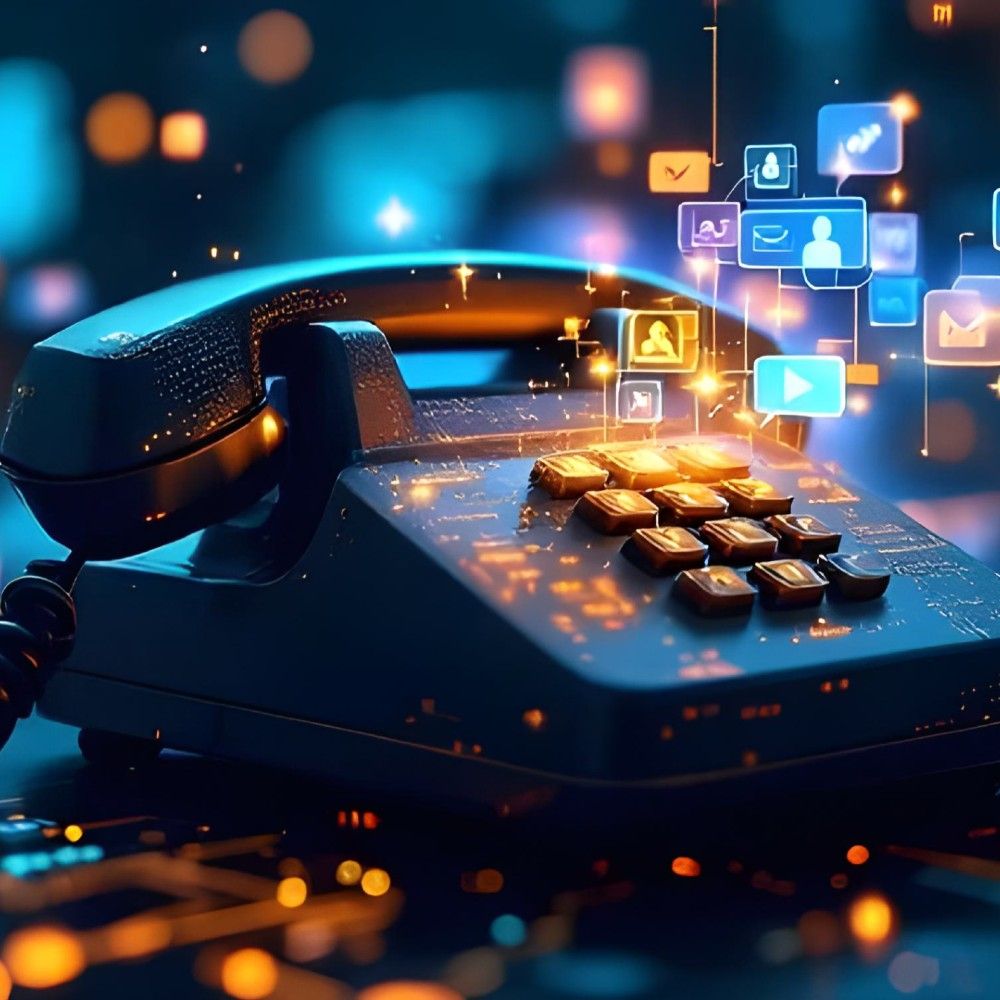
June 4, 2025
Throughout my career, one belief has always guided my approach to customer success:
There is simply no substitute for picking up the phone and calling your customer.
No matter how advanced digital tools become, I’ve found that the personal connection and trust built through a genuine conversation are irreplaceable. 👇
Recent studies by Custify, Cognism and ChurnZero back this up.
Key Insights from these Studies:
➡️ Trust and Confidence:
Studies show that customers feel more confident making important decisions when they can speak directly with a representative. For complex or high-value purchases, phone conversations help build trust and reduce uncertainty.
➡️ Preference in Critical Situations:
Many customers prefer phone support when issues are urgent or complicated. Research indicates that a significant portion of businesses acknowledge their customers still favor phone calls for certain types of support.
➡️ Meeting Rates and Relationships:
Combining digital outreach with follow-up phone calls can significantly increase meeting rates and deepen client relationships. For example, pairing an email with a phone call can boost meeting acceptance by over 15% compared to email alone.
➡️ Customer Retention and Loyalty:
Companies that excel in phone-based customer service see higher retention rates and stronger customer loyalty. The personal touch of a phone call often leads to more meaningful connections and long-term business growth.
While self-service and digital channels are essential for efficiency and scale, I firmly believe that the telephone remains the most important tool in any customer success toolkit. It’s about listening, understanding, and showing your customers that you truly care.
How do you approach customer success? Have you found that phone calls make a difference in your relationships? Let’s connect and share experiences!


June 2, 2025
In today’s competitive landscape, customer retention is more critical than ever—yet it’s often overshadowed by the urgency of acquisition. The Retention Strategy Lab is a hands-on, collaborative exercise designed to help teams shift their focus back to the customer and build practical, impactful retention initiatives. 👇
This lab isn’t just about brainstorming—it’s about action. By stepping into the shoes of different customers, teams can uncover real pain points, design targeted solutions, and evaluate which ideas will deliver the most value. The result? A toolkit of strategies that are not only creative but also grounded in the realities of your customers’ journeys.
I provide this exercise because I believe the best customer success comes from hands-on, actionable learning. My goal is to help you and/or your team develop retention strategies that are innovative, impactful, and grounded in real customer needs. This is just one example of the practical, collaborative resources I offer: tools designed to inspire creativity, foster teamwork, and deliver measurable results throughout the customer journey.
Why Should Your Team Do This Exercise?
“Retention Strategy Lab Exercise”
Objective
To empower participants to design practical, customer-centric retention initiatives, such as
onboarding improvements, loyalty programs, and educational resources, and evaluate their
potential impact.
Step 1: Customer Scenario Assignment (5 minutes)
Instructions:
Divide participants into small groups (3–5 people each).
Assign each group a different customer scenario (e.g., a new user struggling with onboarding, a loyal customer at risk of churning, a customer who hasn’t used a new feature, etc.).
Optional: Use real customer data (anonymized) or personas relevant to your business.
Step 2: Retention Challenge Identification (5 minutes)
Instructions:
Each group discusses their assigned customer’s journey and identifies the main retention challenge or risk point (e.g., confusion during onboarding, lack of engagement, feeling undervalued).
Step 3: Solution Brainstorm (15 minutes)
Instructions:
Each group brainstorms at least two retention strategies tailored to their scenario.
Encourage them to consider:
Onboarding improvements: What would make the first experience smoother?
Loyalty programs: What rewards or recognition would motivate this customer?
Educational resources: What content (tutorials, webinars, FAQs) would help?
Personalized engagement: How can communication be more relevant and timely?
Technology/automation: What tools or triggers could support these efforts?
Tip: Use sticky notes, whiteboards, or digital collaboration tools (Miro, MURAL) to capture
ideas.
Step 4: Impact & Feasibility Mapping (10 minutes)
Instructions:
For each solution, groups rate:
Potential Impact: How much would this improve retention for the customer?
(Low/Medium/High)
Feasibility:
How easy would it be to implement? (Easy/Medium/Hard)
Task:
Place each idea on a simple 2x2 grid (Impact vs. Feasibility).
Step 5: Share & Discuss (10 minutes)
Instructions:
Each group presents their scenario, challenge, and top solution(s) to the larger group.
Facilitator:
Capture high-impact, feasible ideas in a shared document or board.
Step 6: Group Reflection & Action Planning (10 minutes)
Discussion Questions:
Which solutions could we pilot in our real customer journey?
What resources, tools, or support would we need?
How will we measure success (e.g., retention rate, engagement, satisfaction)?
Action:
As a group, select 1–2 ideas to develop further or test in your actual projects.
Wrap-Up
Reflection:
What did you learn about customer motivations and retention risks?
How can you apply these strategies to your own work or team?
Commitment:
Have each participant write down one retention action they’ll try in the next month.
Outcome
Participants leave with:
Creative, actionable retention strategies tailored to real customer challenges.
A framework for evaluating and prioritizing retention initiatives.
A renewed focus on customer-centric retention in their daily work.
Tip: Repeat this activity quarterly to keep your retention strategies fresh and responsive to evolving
customer needs!

Customer success teams have never been more critical to business growth than they are in 2025. But as their responsibilities expand, so do the hurdles they face. From integrating new technologies to delivering personalized experiences at scale, today’s customer success professionals must navigate a rapidly changing landscape. Here are the top challenges facing customer success teams in 2025-and practical strategies to overcome them. 👇
1. Aligning With Other Departments
Challenge: Customer success often sits at the crossroads of sales, product, and support. Misalignment between these teams can lead to inconsistent messaging, missed opportunities, and a poor customer experience.
Solution: Establish regular cross-functional meetings. Create shared goals and metrics. Use collaborative tools to keep everyone on the same page.
2. Turning Customer Data Into Action
Challenge: span style="color: #bfbfbf;">Customer data is often scattered across multiple platforms, making it difficult to get a complete view of the customer journey and identify at-risk accounts.
Solution: Invest in unified customer data platforms. Develop dashboards that track key metrics like health scores and product usage. Train teams to interpret and act on data insights.
3. Balancing Automation With the Human Touch
Challenge: AI and automation can help scale customer success efforts, but over-reliance can make interactions feel impersonal and robotic.
Solution: Automate repetitive tasks (like scheduling and surveys) but reserve complex or sensitive conversations for human team members. Use AI to provide insights and recommendations, not to replace genuine relationship-building.
4. Proving ROI and Owning Revenue
Challenge: Customer success is now expected to drive renewals, upsells, and overall revenue growth-but demonstrating direct impact can be tricky.
Solution: Track expansion and retention metrics alongside customer satisfaction. Share success stories and case studies with leadership. Align compensation and incentives with revenue-related goals.
5. Scaling Personalization
Challenge: As companies grow, providing personalized attention to every customer becomes more challenging.
Solution: Segment customers by size, industry, or needs to tailor outreach. Use digital-led programs (like webinars and resource hubs) for lower-touch segments. Reserve high-touch strategies for strategic accounts.
6. Adapting to Rapid Change
Challenge: Customer expectations, products, and markets are evolving faster than ever.
Solution: Foster a culture of continuous learning and adaptability. Regularly update playbooks and processes. Gather feedback from customers and frontline staff to stay ahead of trends.
Key Takeaways Customer success teams in 2025 must be agile, data-driven, and deeply collaborative. By focusing on alignment, smart use of technology, and scalable personalization, CS professionals can turn today’s challenges into tomorrow’s opportunities.

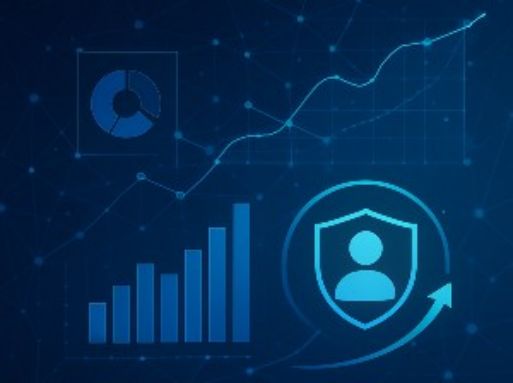
May 7, 2025
Customer churn remains one of the most pressing challenges for SaaS and technology businesses in 2025. As competition intensifies and customer expectations evolve, the ability to proactively prevent churn is now a critical differentiator. Modern churn prevention is no longer reactive-it is data-driven, customer-centric, and deeply integrated into every stage of the customer journey. This article explores the latest strategies and highlights how the "Proactive Churn Prevention Toolkit – SaaS & Technology Edition" empowers organizations to stay ahead. 👇
In 2025, churn prevention is defined by a proactive approach: identifying customer frustrations, friction points, and drop-off patterns early, then intervening with targeted solutions before attrition occurs. For SaaS businesses, where recurring revenue is paramount, even small reductions in churn can have outsized impacts on growth and profitability.
Key Strategies for Churn Prevention in 2025
1. Early Identification of At-Risk Customers
Modern analytics and predictive modeling now enable companies to spot churn signals-such as declining product usage, negative feedback, or payment issues-long before a customer decides to leave. By leveraging behavioral data and health scores, customer success teams can prioritize outreach and tailor interventions for those most at risk.
2. Proactive, Personalized Engagement
Once at-risk customers are identified, swift, personalized engagement is essential. This includes reaching out to understand their concerns, offering tailored solutions, and demonstrating commitment to their success. Proactive engagement not only addresses issues before they escalate but also builds trust and loyalty.
3. Seamless Onboarding and Ongoing Education
A smooth onboarding process reduces early-stage churn by ensuring customers quickly realize value from the product. Interactive tutorials, personalized training, and dedicated account managers for high-value customers are now standard best practices. Ongoing education-through webinars, knowledge bases, and in-app guidance-helps users unlock new features and deepen their engagement.
4. Customer Community and Advocacy
Building a customer community fosters peer-to-peer support and advocacy, which can significantly reduce voluntary churn. Digital forums, Slack groups, and user events create spaces for customers to share best practices and success stories, increasing their sense of belonging and investment in the product.
5. Continuous Product Improvement
Retaining customers requires a product that evolves with their needs. Regularly collecting and acting on customer feedback ensures the product roadmap aligns with user expectations and market trends. Highlighting and promoting features that drive engagement-identified through cohort and feature adoption analysis-can further boost retention.
6. Incentives and Loyalty Programs
Well-structured loyalty programs and targeted incentives reward long-term customers and encourage continued engagement. These can include discounts, exclusive content, or early access to new features, tailored to the needs and behaviors of different customer segments.
7. Transparent and Responsive Support
Exceptional, multi-channel customer support remains a cornerstone of churn prevention. Fast, personalized responses-augmented by AI-driven chatbots and self-service resources-ensure customers feel valued and supported at every touchpoint.
The Proactive Churn Prevention Toolkit – SaaS & Technology Edition
To operationalize these strategies, the "Proactive Churn Prevention Toolkit – SaaS & Technology Edition" provides a comprehensive suite of resources designed for today’s fast-paced SaaS environment. This toolkit enables organizations to:
Monitor Customer Health: Leverage real-time dashboards and customizable health scores to track engagement, satisfaction, and risk factors.
Automate Early Warnings: Set up automated alerts and workflows for at-risk customers, enabling timely, data-driven interventions.
Personalize Outreach: Use segmentation and customer journey mapping to deliver targeted communications and offers based on behavior and lifecycle stage.
Facilitate Proactive Support: Integrate with customer support platforms to ensure no warning sign goes unnoticed and every customer receives prompt assistance.
Measure and Iterate: Built-in analytics allow for continuous measurement of retention initiatives, supporting a culture of ongoing improvement.
By embedding these capabilities into daily operations, SaaS and technology companies can move from reactive churn management to a truly proactive, customer-first retention strategy.
Looking Ahead
Churn prevention in 2025 is a dynamic, multi-faceted discipline that requires the right mix of technology, process, and human touch. With advanced analytics, proactive engagement, and tools like the "Proactive Churn Prevention Toolkit – SaaS & Technology Edition," organizations can not only reduce attrition but also transform customers into loyal advocates-fueling sustainable, long-term growth.

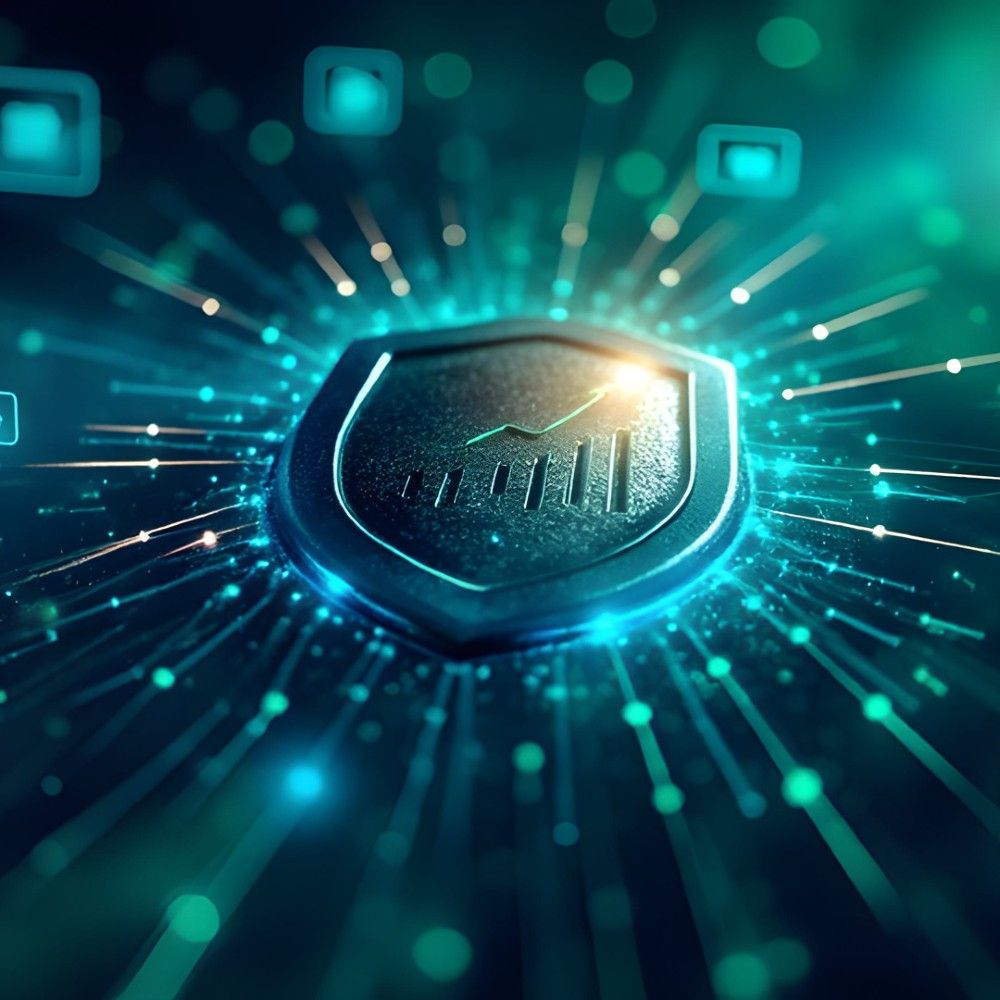
May 28, 2025
In the fast-paced world of SaaS, waiting for customers to report issues is a recipe for churn. The most successful companies today are those that anticipate customer needs and reach out before problems arise. I’ve seen the power of this approach firsthand: by implementing proactive engagement strategies at a SaaS company, I was able to reduce churn by an incredible 89%. 👇
Proactive engagement means being one step ahead—identifying potential roadblocks, offering help before it’s requested, and showing customers you’re invested in their success. This not only builds trust but also helps customers realize the full value of your product, making them more likely to stay and grow with you.
To truly understand our customers and address their needs, I personally spoke with each one for a full analysis of our products from their perspective. These conversations went beyond surface-level feedback—I dug into their pain points, listened to their suggestions, and asked how we could improve the product to better serve them. I then relayed these insights directly to our product, support, and development teams, ensuring that customer feedback drove meaningful change across the company.
Building on this foundation, I incorporated personalized check-ins for every customer, tailoring our outreach based on their unique experiences and needs. Whenever a request or issue arose, I responded immediately by phone, solving problems in real time. This hands-on, proactive approach built genuine trust—customers knew they could count on me, and that their voices truly mattered.
The result? Not only did our churn rate drop by 89%, but our customer relationships became stronger than ever, with clients feeling valued, heard, and supported every step of the way.
This approach isn’t unique to my experience. Companies like Slack and Salesforce have also embraced proactive engagement—using in-app messaging, data-driven insights, and regular outreach to boost retention and customer happiness.
Proactive engagement turns customer success into a true growth driver. By reaching out before customers even know they need help, you build loyalty, reduce churn, and create lasting partnerships. If you’re still relying on reactive support, now’s the time to make the switch—your customers (and your bottom line) will thank you.
If you’d like to follow my approach or leverage the tools I used, I’ve developed The Ultimate Churn Prevention Toolkit—with industry-specific editions for SaaS & Technology, Telecom, E-Commerce, and the Health Sector. You can find more information on these here: https://customersuccesspro.com/tools


May 21, 2025
In today’s digital-first business landscape, customer success teams face a crucial balancing act. Automation tools like chatbots and AI-driven self-service portals promise round-the-clock efficiency and instant answers. 👇
However, as companies race to automate, many are discovering that too much technology can leave customers feeling like they’re talking to a machine, not a trusted partner.
The appeal of automation is obvious. Bots don’t need sleep, can handle thousands of inquiries at once, and provide immediate responses to routine questions. For simple tasks-checking an order status, resetting a password, or answering frequently asked questions-automation is a game changer.
It frees up human agents to focus on more complex issues and helps companies scale their support without ballooning costs.
But there’s a downside to relying too heavily on technology. Automated responses, no matter how well-crafted, often lack the warmth and nuance of real human interaction.
Customers facing unique or emotionally charged problems can quickly become frustrated when they’re met with generic replies or endless loops of scripted options. The inability of bots to read between the lines, pick up on subtle emotional cues, or offer genuine empathy can turn a minor inconvenience into a major source of dissatisfaction.
Over time, this impersonal approach can erode trust and loyalty, making it easier for customers to take their business elsewhere.
Despite the rise of AI, the human touch remains irreplaceable in customer success. When customers encounter a problem that doesn’t fit neatly into a predetermined script, they want to know someone is truly listening.
Human agents can adapt, think creatively, and provide reassurance in a way that technology simply cannot. These authentic connections are often what turn a one-time buyer into a lifelong advocate. The key, then, is not to choose between automation and personal service, but to blend them thoughtfully.
Companies can use automation to handle the basics, ensuring customers get quick answers to straightforward questions.
At the same time, there should always be a clear and easy path for customers to reach a real person when they need more help.
Personalizing automated messages-by using customer data to tailor responses-can also make digital interactions feel less robotic. Meanwhile, empowering support teams with the right tools and context allows them to pick up conversations seamlessly and deliver exceptional service when it matters most.
Regular feedback is essential to getting this balance right. By listening to customers and monitoring their satisfaction with both automated and human interactions, companies can continually refine their approach.
Transparency is also key; letting customers know when they’re interacting with a bot, and reassuring them that a human is always within reach, builds trust and sets clear expectations.
Ultimately, the most successful customer success strategies are those that harness the strengths of both technology and humanity. Automation brings speed and efficiency, while people bring empathy and creativity.
When these elements work together, customers enjoy the best of both worlds: fast solutions for simple needs, and genuine care when it really counts. In the end, finding the sweet spot between automation and the human touch isn’t just good for customers-it’s good for business.
If you are looking for additional resources to figure out how to implement AI strategies, you can find:
The Intelligent Automation Strategies Toolkit for Next-Gen Customer Success, as well as the Customer Success 2.0: Smart AI Automation Mini Masterclass at https://customersuccesspro.com


Receive a FREE Communication Swipe File when you sign up.
Maximum of 1-2 Newsletters per week - No Spam